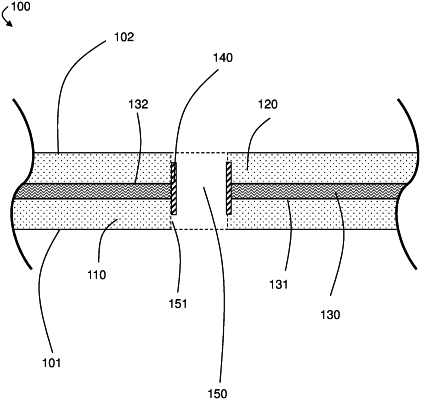| CPC H01M 4/04 (2013.01) [H01M 4/75 (2013.01); H01M 10/04 (2013.01); H01M 10/0585 (2013.01); H01M 50/534 (2021.01); H01M 50/562 (2021.01)] | 43 Claims |

|
1. A method comprising:
penetrating a portion of an article comprising:
an electrically non-conductive layer comprising a first side and a second side that is penetrated during the penetrating;
a first electrode portion adjacent to the first side of the electrically non-conductive layer, wherein the first electrode portion comprises a first electrode active material that is an electrochemically active species that is penetrated during the penetrating; and
a second electrode portion adjacent to the second side of the electrically non-conductive layer, wherein the second electrode portion comprises a second electrode active material that is an electrochemically active species that is penetrated during the penetrating, such that the penetrating causes the formation of an electrically conductive solid material region extending from the first electrode portion, through the electrically non-conductive layer, and to the second electrode portion,
wherein:
the first electrode active material of the first electrode portion is the same as the second electrode active material of the second electrode portion,
the electrically conductive solid material region also comprises electrode active material that is the same as the electrode active material present in the first electrode portion and the second electrode portion, and
the electrically conductive solid material region electrically couples the first electrode portion and the second electrode portion.
|